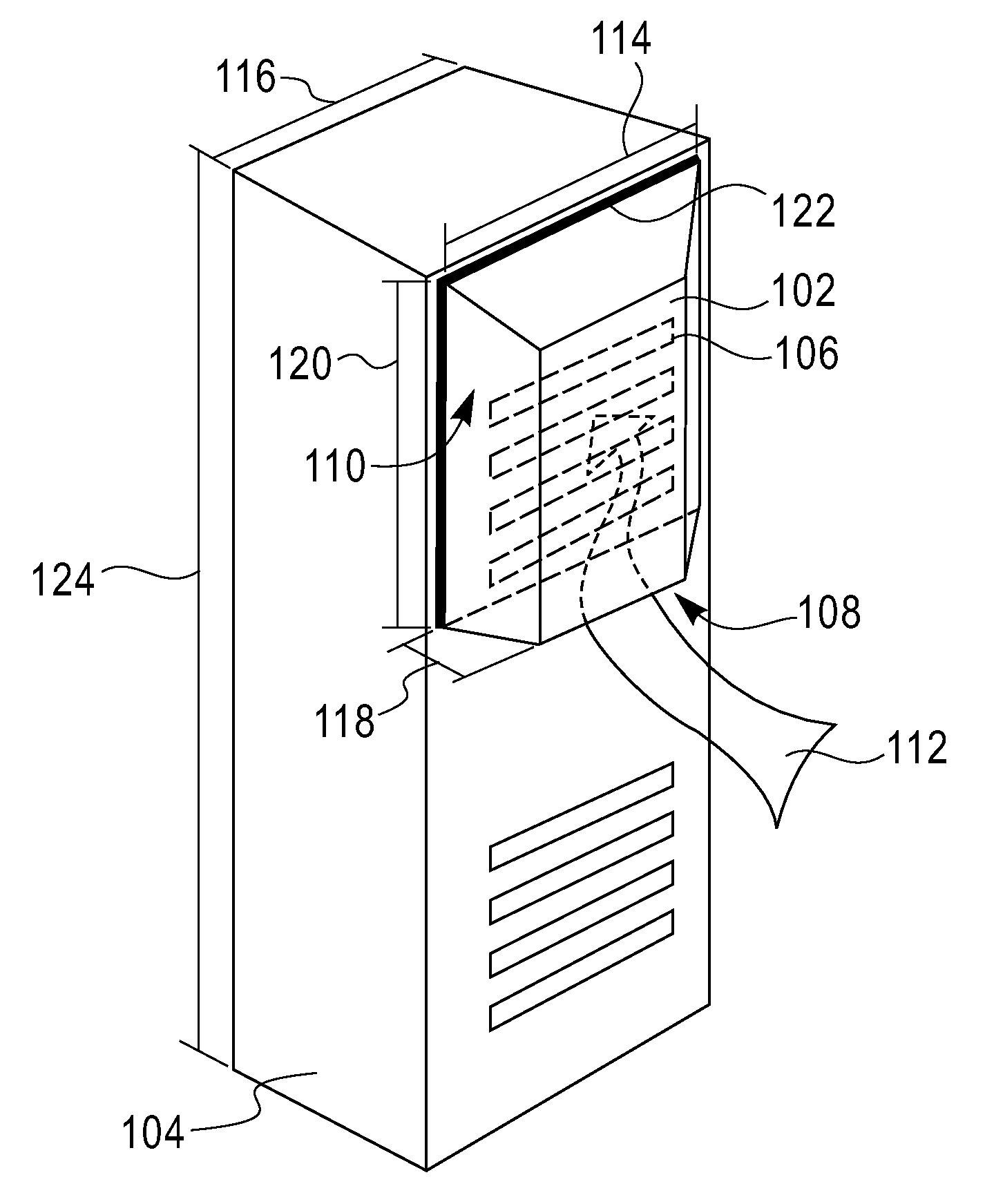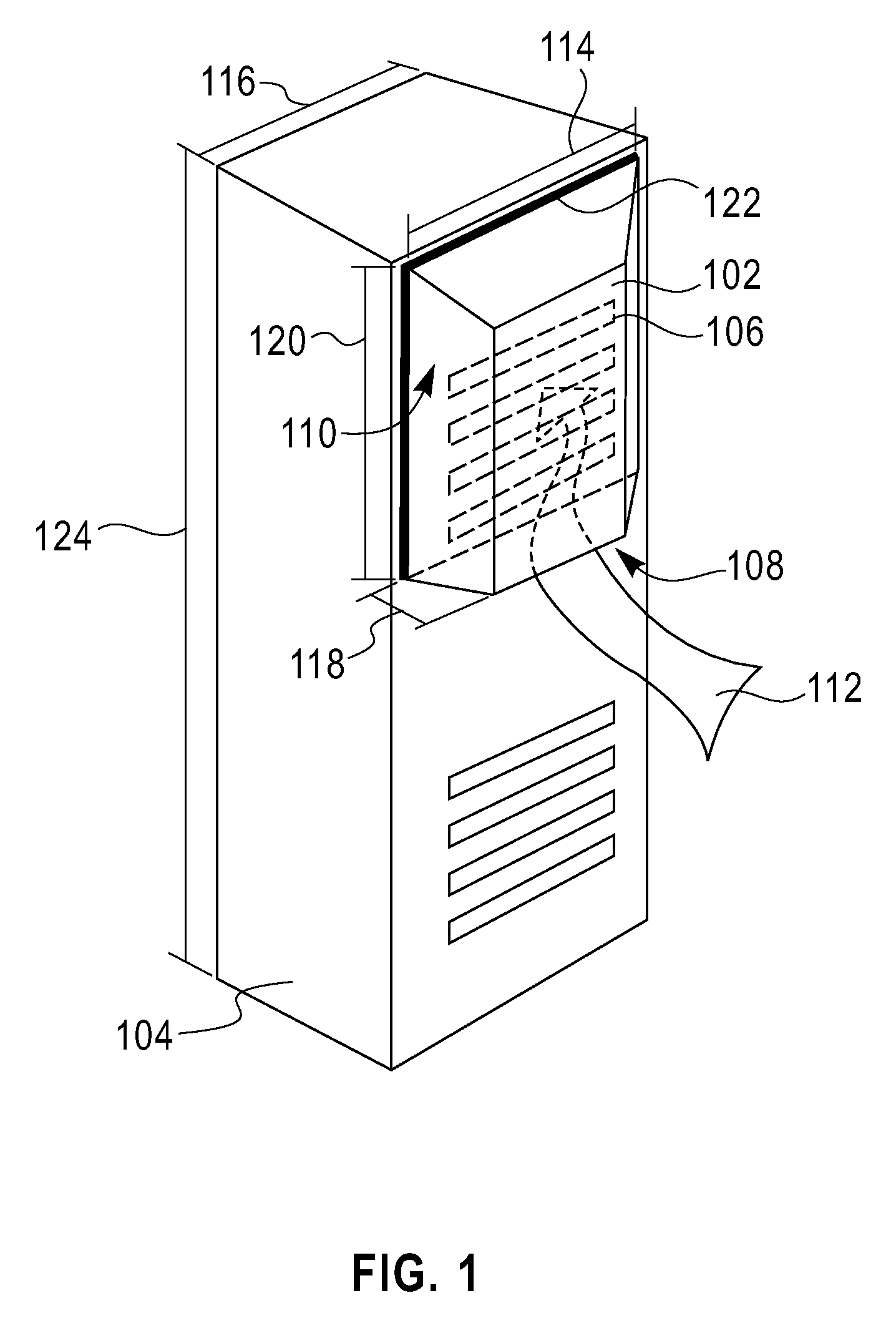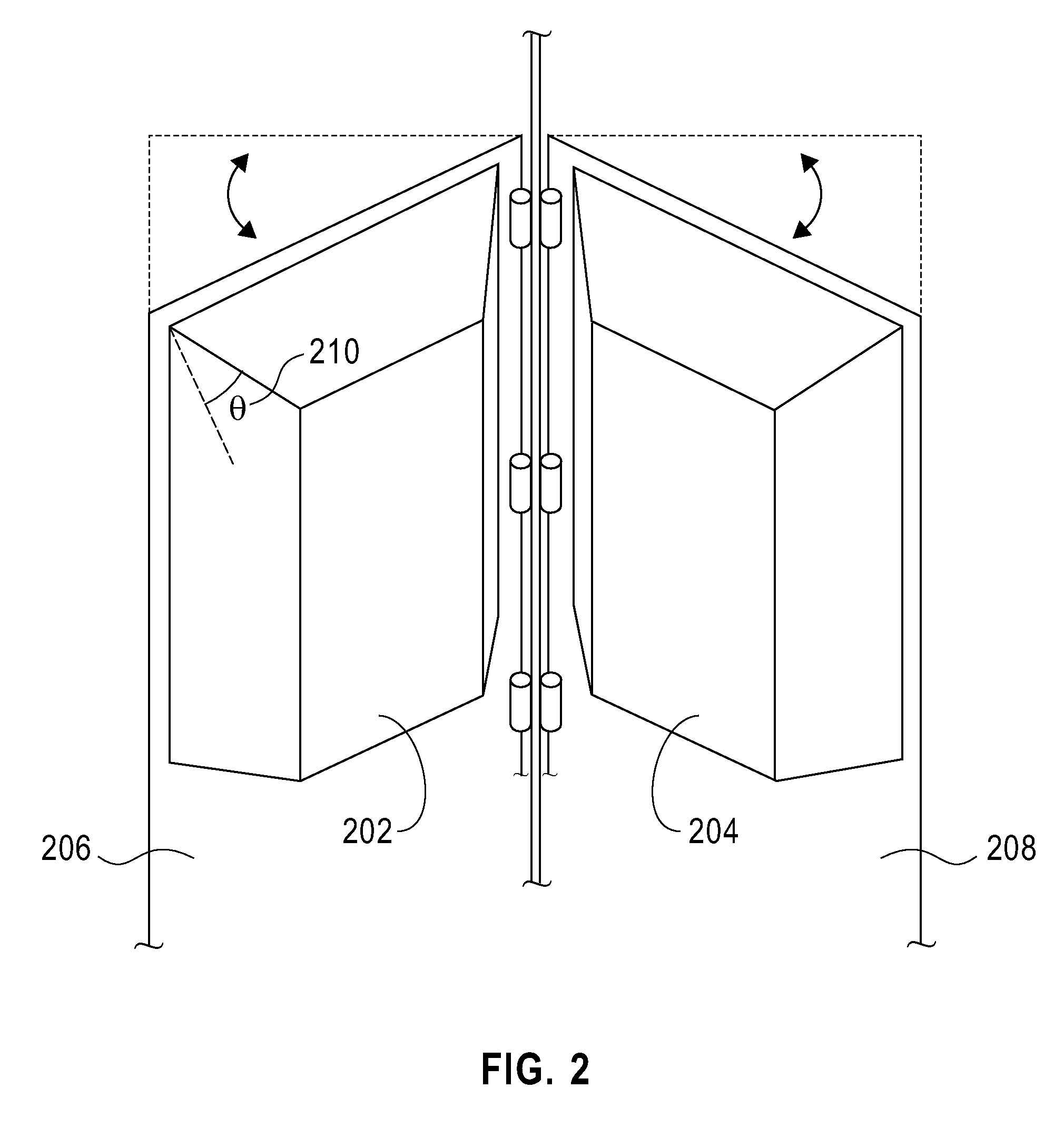Techniques for Data Center Cooling
a technology for data centers and cooling systems, applied in cooling/ventilation/heating modifications electrical apparatus casings/cabinets/drawers, etc., can solve problems such as inefficiency, data center air cooling systems are not designed to handle thermal load, and increase power levels pose heat management challenges
- Summary
- Abstract
- Description
- Claims
- Application Information
AI Technical Summary
Benefits of technology
Problems solved by technology
Method used
Image
Examples
Embodiment Construction
[0022]FIG. 1 is a diagram illustrating exemplary computer equipment rack 104 having air inlet redirection duct 102 mounted thereto. As will be described in detail below, an air inlet redirection duct can increase the efficiency of a data center cooling system by helping to minimize air recirculation effects and to prevent cooled air from being cycled without passing through the equipment.
[0023]Computer equipment rack 104 comprises air inlet ports, perforations, vents, holes or slots (hereinafter “air inlets”), e.g., air inlets 106, through which air is drawn to cool the computer equipment therein. Air inlets typically found on computer equipment racks are well known to those of ordinary skill in the art, and are not described further herein.
[0024]Air inlet redirection duct 102, when mounted to computer equipment rack 104 so as to surround at least a portion of air inlets 106, provides a continuous air passageway through open end 108 / open side 110 and into air inlets 106. e.g., as in...
PUM
 Login to View More
Login to View More Abstract
Description
Claims
Application Information
 Login to View More
Login to View More - R&D
- Intellectual Property
- Life Sciences
- Materials
- Tech Scout
- Unparalleled Data Quality
- Higher Quality Content
- 60% Fewer Hallucinations
Browse by: Latest US Patents, China's latest patents, Technical Efficacy Thesaurus, Application Domain, Technology Topic, Popular Technical Reports.
© 2025 PatSnap. All rights reserved.Legal|Privacy policy|Modern Slavery Act Transparency Statement|Sitemap|About US| Contact US: help@patsnap.com



